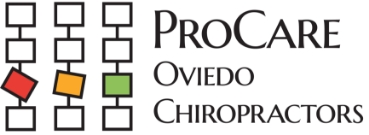Being referred to a physical therapist is just the first step towards recovery. Many patients do not know what their treatment plan entails before going into their initial consultation or appointment. If you have experienced an injury causing pain or limited functional mobility, you may have electrical stimulation in your treatment plan ahead.
Introduction to Electrical stimulation:
 By definition, a modality is a type of electrical, thermal, or mechanical energy that causes physiological changes. A modality is used for the relief of pain, improvement of circulation, decrease in swelling, reduction of muscle spasms, and the delivery of medication in conjunction of other procedures. Electrical stimulation is a type of physical therapy modality.
By definition, a modality is a type of electrical, thermal, or mechanical energy that causes physiological changes. A modality is used for the relief of pain, improvement of circulation, decrease in swelling, reduction of muscle spasms, and the delivery of medication in conjunction of other procedures. Electrical stimulation is a type of physical therapy modality.
If you suffer from an injury or illness which causes pain or limited functional mobility, your physical therapist may recommend electrical stimulation, E-stim for short. Electrical stimulation is used for lower back pain, post-surgical pain, muscle weakness, poor motor control, tendonitis, and bursitis. Whether you have been experienced in an auto accident or your body is just experiencing normal wear and tear, this modality may very well be a part of your treatment plan.
Why physical therapists use E-stim:
There are various reasons why physical therapists use electrical stimulation for their patients’ needs. One common reason E-stim is used during treatment is to administer medication for inflammation. Electrical stimulation contracts muscles which is therapeutic for weak or dysfunctional muscles. E-stim may also reduce muscle spasms and decrease pain, so all in all, thousands of patients seeking relief and improvement during physical therapy think it is worth the try.
Wound care specialists may use E-stim to treat stubborn wounds. E-stim can be controversial on whether it not it should be used. Because of its passive nature, patients doing minimal work while the modality does the work. People speculate that it cannot be “good.” Most successful treatments require patients to be active in some way.
Research is still controversial and heavily discussed by professionals. Many debate whether or not E-stim is of value to physical therapists. Whether or not you seek electrical stimulation, your physical therapist may treat you with it, so it is best to know what to expect.
What to expect:
The electrodes are connected to a wire via the E-stim machine. You should only feel a slight tingling sensation. The intensity will increase until you consider it strong but still comfortable. If the electrical stimulation is being used for pain relief or muscle spasms, you will be relaxed during the treatment. If your physical therapist is using it to improve muscle strength or function, you may be instructed to contract your muscle as the E-stim is working.
If the E-stim is causing pain or discomfort, immediately inform your physical therapist of this as it should never be either. Your therapist will asses the treatment and choose to end or adjust the treatment.
Types of E-stim:
With different goals in mind, physical therapists use various types of electrical stimulation. The first we will discuss is TENS, short for electrical neuromuscular stimulation. TENS is used to manage acute to chronic pain. Physical therapists use TENS to decrease pain by applying electrodes over the areas that are causing pain in your body. The electricity will block the pain signals traveling through your body causing the pain.
Iontophoresis is a type of electrical stimulation that is used to help administer medication to your body during physical therapy. The electrical current from the E-stim pushes various medications through your skin and into your body. Your physical therapist will most likely use medicine to decrease inflammation or muscle spasms. Iontophoresis medicines can break up calcium deposits which cause pain in calcific tendonitis. Physical therapists can use other medicines the same way for the treatment working towards other goals.
Thank you for stopping by. We will continue to discuss the different types of electrical stimulation in our next blog. Check in for more next week! Be sure to schedule an appointment today at ProCare Health & Rehab Centers to begin your treatment journey for injuries caused by an auto accident.
Staff Writer



